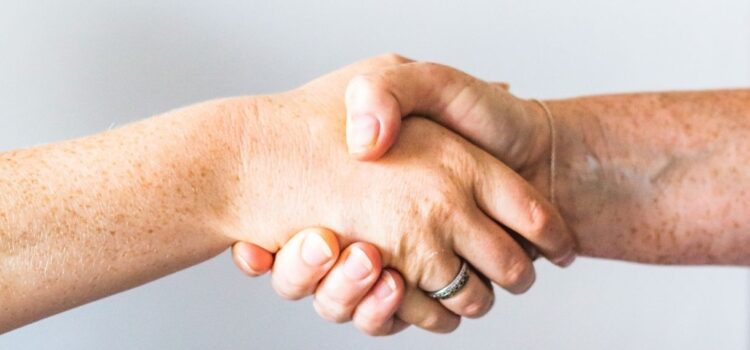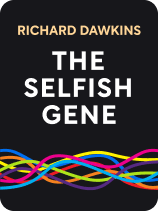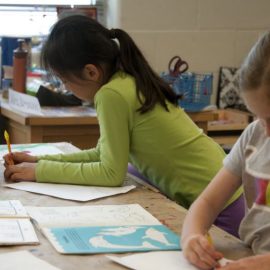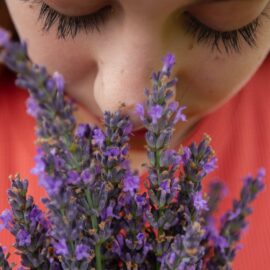

This article is an excerpt from the Shortform book guide to "The Selfish Gene" by Richard Dawkins. Shortform has the world's best summaries and analyses of books you should be reading.
Like this article? Sign up for a free trial here .
What is biological altruism? How do our genes and natural instincts lead us to help others?
In The Selfish Gene, Richard Dawkins asserts that everything in nature can be explained by understanding that life is all about passing on genes. But, instead of always acting from a selfish perspective, biological altruism also exists in nature.
Keep reading to better understand biological altruism.
Biological Altruism and Selfishness
At the genetic level, altruism must be bad and selfishness must be good. Alleles (different versions of the same gene, such as for blue vs. brown eyes) are in direct competition with each other. Therefore, by definition, alleles that succeed at the expense of others will tend to survive.
However, when it comes to genes that are not alleles to one another, the way they interact is extremely complicated. For example, there’s no single gene for “long legs.” Rather, there are many, and each of them has some sort of influence on leg length. In an environment where long legs are beneficial, all of the alleles which contribute to that trait will be favored by natural selection.
This isn’t an absolute truth—favorable alleles can still fail if they’re in an organism with other disadvantages, or simply due to bad luck. However, in the long term, the frequency of a given gene in the population is (usually) directly proportional to how beneficial that gene is—that’s how evolution works.
There are very few genetic qualities that are objectively good or bad. For example, an herbivore with a gene for sharp, pointed teeth would be at a disadvantage, since such teeth aren’t as effective at tearing and grinding plant matter. A carnivore with that same gene would be much more successful. Most advantages and disadvantages are environmental. For a gene, the environment is other genes—such as what kind of animal a gene for sharp teeth is in.
Keep all of this in mind when considering biological altruism or selfish behaviors in an individual. The ultimate question is what effect those behaviors will have, in the long term, on the frequencies of certain genes in the population.
Why Animals Help Their Relatives
Now we’ll explore how and why animals show altruistic behaviors, especially toward their family members. Genes don’t just act to protect the individual they’re inside of. We know this because animals frequently help their offspring and relatives, even at risk to themselves. This makes sense if we consider a “selfish gene” to be all copies of that gene across the entire population. Then we can assume that individuals will act to protect other individuals who are likely to have the same gene.
This perceived likelihood could come from a physical characteristic that the gene gives. For example, if there were a gene for purple hair, you might expect one purple-haired person to act altruistically toward another. However, the odds of a single gene providing both “purple hair” and “altruism toward purple hair” characteristics are astronomical—remember that genes aren’t conscious, and can’t choose what effects they have on their hosts. Granted, it’s possible that those two genes might tend to be inherited together, as they provide a mutually beneficial environment.
However, a much easier way for genes to “recognize” themselves in others is through family relations. By definition, close family members will share a lot of the same genes. While it would be very unlikely for a gene to code both for a trait and for altruism toward that same trait, a gene that codes for altruism toward relatives would be successful all on its own.
Therefore, it should be expected that animals will show biological altruism to their family—the more closely related they are, the more biological altruism. Assuming sexual reproduction, an animal’s offspring will share half of its genes. A sibling will, on average, also share half of the same genes.
Therefore, from a purely logical standpoint, an animal should consider its child or sibling to be worth half as much as its own life, in terms of preserving genes. That value will go down with more distant relatives. For example, a grandchild will only have 1/4 of the animal’s genes, so should only be valued at 1/4 of the creature’s life. You could calculate the “relatedness” of any animal to another by creating a family tree, and counting how many branches you have to move up and down the tree to get from one to the other.
If g is the number of branches traveled, the relatedness would be (1/2)g
That equation assumes only one common ancestor. If there are more, multiply the result by the number of common ancestors in the most recent generation that has them.
Biological Altruism and Relatives
Naturally, the previous section raises the question of how animals recognize their relatives—or even whether they do. It’s possible that some animals recognize each other simply by appearance, and act altruistically toward animals that resemble them. Others might act altruistically toward any member of their species that happens to be nearby. In that case, we could assume that the odds of any given member of the species being a relative are good enough to make the altruism worth the risk. These behaviors arose due to common situations in nature, and they can misfire—or be made to misfire, like when farmers make nesting hens sit on eggs that aren’t their own.
An interesting evolutionary arms race can be seen between certain species of songbirds and cuckoos who lay eggs in their nests, trying to trigger just such a misfire. Cuckoos try to trick the songbirds into hatching their eggs by laying them in the nest, which takes advantage of the songbirds’ natural altruism toward eggs and small birds in their own nests.
Those songbirds who recognize the imposters and throw them out will naturally contribute more to the next generation’s gene pool, because they aren’t wasting resources raising cuckoos. Therefore, the next generation will be better at recognizing the cuckoo eggs. On the other hand, those cuckoos whose eggs more closely resemble songbird eggs will have their offspring survive and contribute their genes to the next generation. This is a perfect example of selfishness (from the cuckoos) and altruism (from the songbirds) and the struggle between them.
It’s likely that, in addition to the relatedness value, an animal will also have to consider how certain it is of that relationship. The songbirds from the previous example must be quite certain that the cuckoos are actually their offspring—of course, in that case it turns out that they’re mistaken.
However, it’s usually much easier for most animals to recognize their own offspring than a brother or sister. Therefore, even though a sibling should have the same degree of relation as a child, parent-offspring altruism is much more common than sibling altruism in nature. By that same token, an animal is always 100% certain of its relation to itself, which can often weight decisions in favor of helping itself even over close relatives.

———End of Preview———
Like what you just read? Read the rest of the world's best book summary and analysis of Richard Dawkins's "The Selfish Gene" at Shortform .
Here's what you'll find in our full The Selfish Gene summary :
- Why organisms don't matter, only genes do
- How all life forms begin with a replicating molecule
- How species need to balance aggression and pacifism to survive






